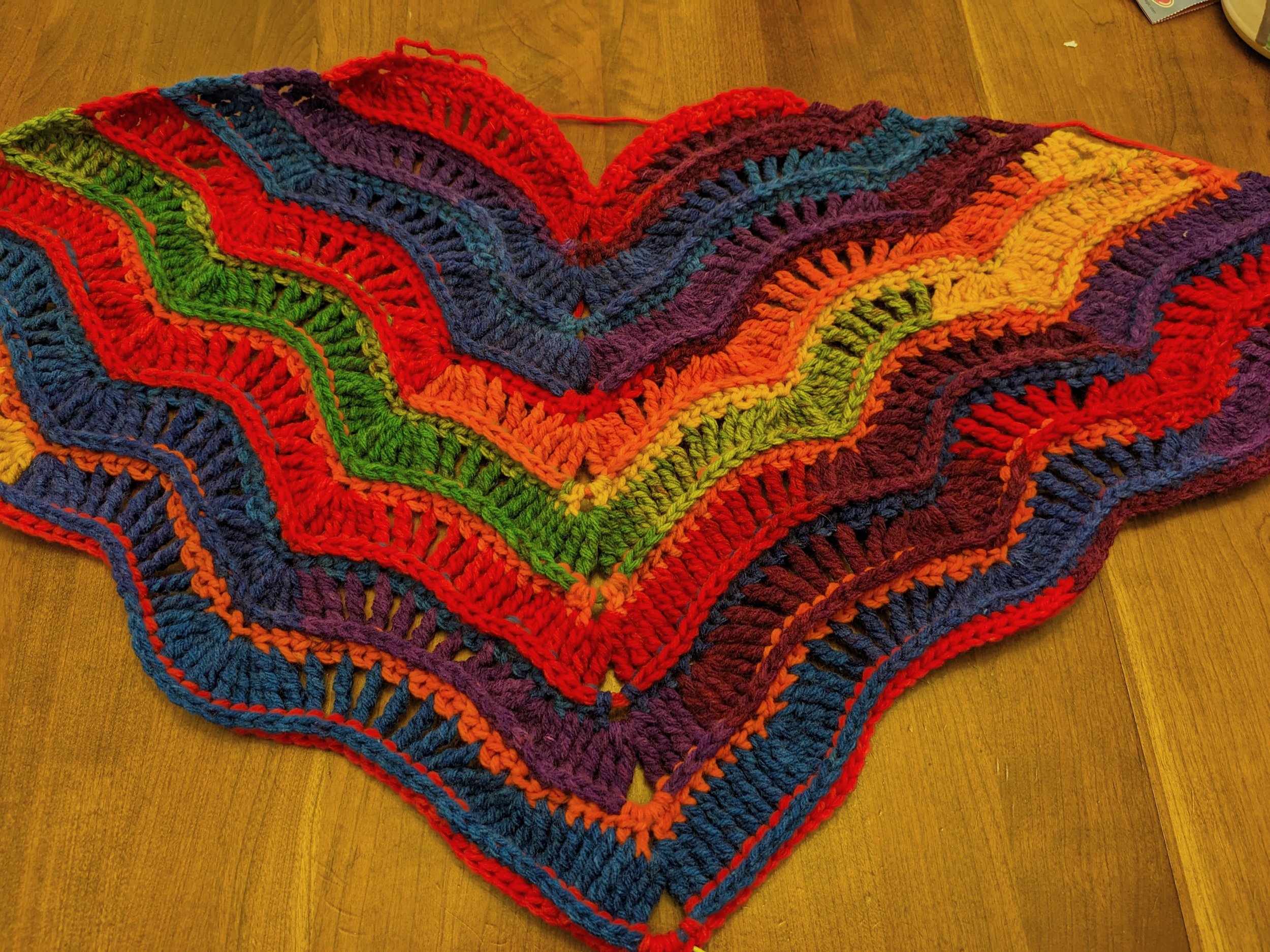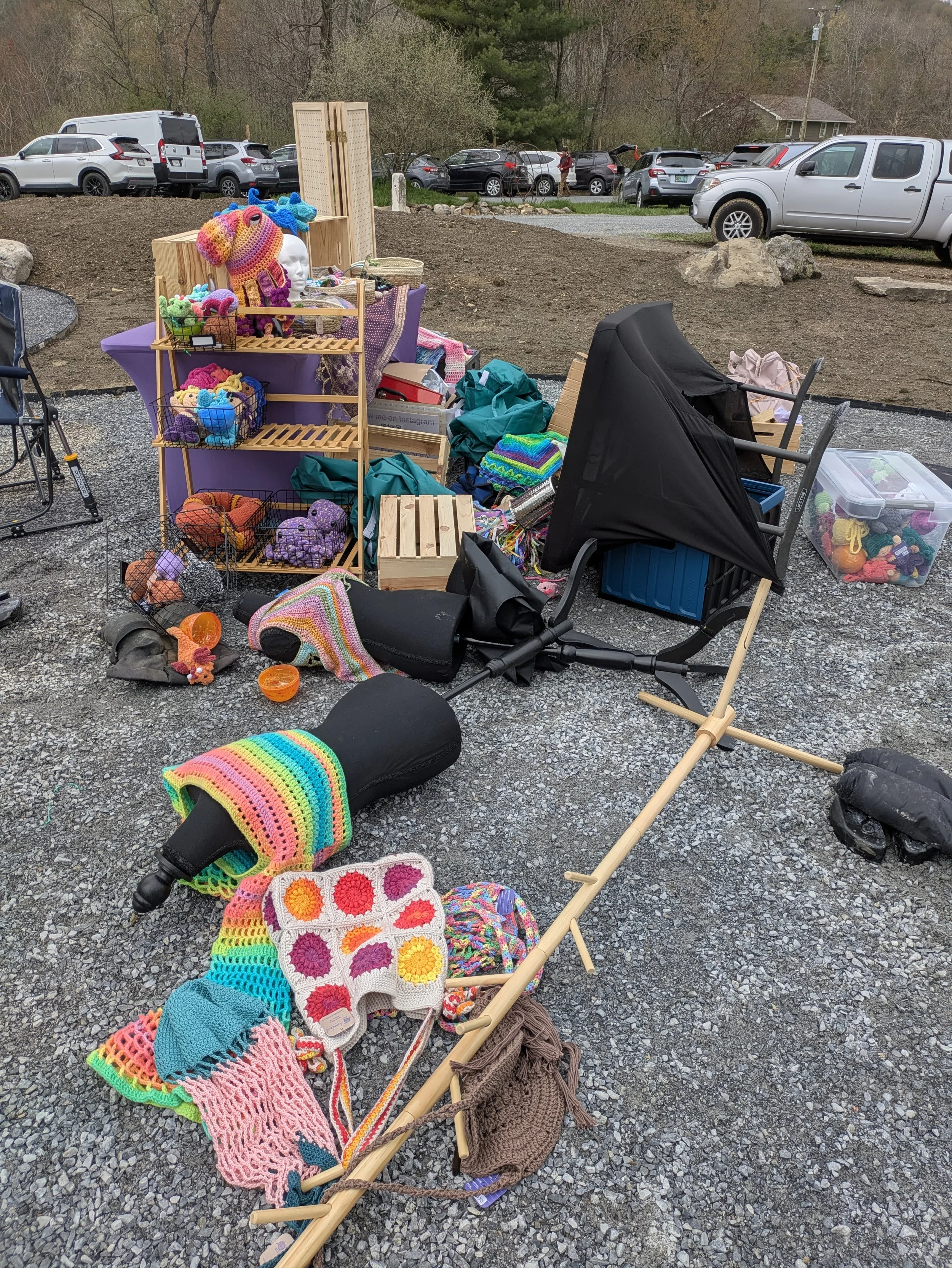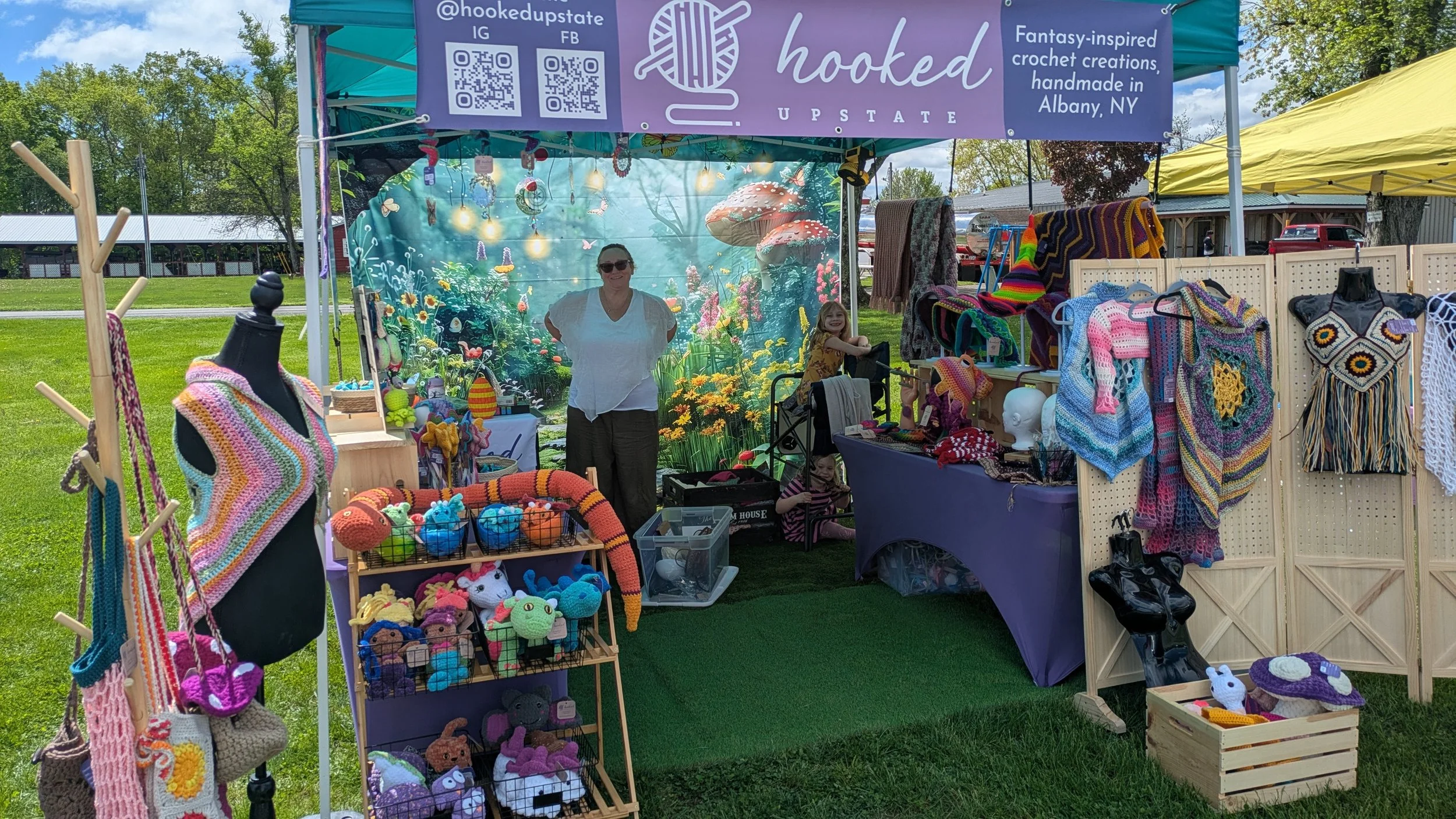Behind the Magic: What It Really Takes to Create My Crochet Art
Take a peek inside my little forest of handmade magic 🌿✨
Every corner of my booth is filled with color, texture, and one-of-a-kind creations—designed to enchant, inspire, and maybe even spark a little nostalgia. From plush creatures to fairy-tale fashion, this is where the magic lives.
If you’ve ever stopped by my booth or scrolled through my Instagram, you’ve probably seen colorful tops, whimsical hoods, fantastical plushies, and dragons with soul. But what you haven’t seen is everything it takes behind the scenes to make the magic happen.
This blog post is for the curious hearts, the fellow makers, and the buyers who truly want to understand the time, energy, and creativity that goes into each piece. Because every item I make is so much more than yarn and stitches—it’s trial and error, passion and patience, intuition and imagination.
The Hunt for the Right Pattern
Every piece begins with a spark—an idea, a feeling, or a type of person I imagine wearing it. From there, I usually dive into Ravelry, Etsy, or Google to hunt for the perfect pattern. Some of my favorite designers include Hannah Bovender of Of Mars, Lydia Viatoris of Earth Tricks, Megan Lapp of Crafty Intentions, and Natalie Allen of The Twisted Hatter.
But rarely do I follow a pattern exactly. I’ll make modifications to improve fit, durability, or visual appeal—adding foundation rows for stretch, swapping stitches, changing up placements of features, or even combining patterns when needed. And yes, I’ve designed a few items from scratch (though I haven’t published them yet—that’s on the horizon!).
Yarn: The Real Main Character
Ask any fiber artist and they’ll tell you: yarn matters. For me, color always comes first. Bold ombres, self-striping magic, or rich solids with depth—they guide the personality of a piece. But the fiber content is equally important. For garments, I think seasonally: bamboo, lightweight acrylics, and mercerized cotton for summer, wool blends and fuzzy textures for winter.
Texture, stretch, drape, and feel on the skin all matter. And for my plushies? Only the softest chenille will do. That being said, not every yarn works out. I once made a dragon hood in a thick, dreamy yarn that turned out too heavy—it kept sliding off. Lesson learned.
But sometimes, accidents become art. One of my favorite pieces was a sweater I made for my daughter using leftover skeins of Lion Brand Mandala. I didn’t plan the color order—it just happened. And it was adorable!.
Testing, Frogging, and Trying Again
Not every pattern clicks the first time. If it looks complicated, I’ll do a test run in stash yarn first. I’ve had projects (like the Phoenix shawl I still haven’t conquered) that require hours of trial and error—or get set aside indefinitely.
Even now, with years of experience, I sometimes reread instructions 10 times or frog an entire project because it doesn’t meet my vision. But when it does come together—when I feel that it’s right—it’s worth every redo.
The Final Touches: Labels, Pricing, and Posting
Once the crocheting is done, there’s still so much to do. I create custom labels (via Vistaprint) with materials, care instructions, price, and branding. Then comes pricing—which I base on time, materials, and a markup that considers booth fees, taxes, and online costs. I pay myself a fair hourly wage because my skills, creativity, and experience matter.
I always include a few lower-priced items in my booth—like stuffies, bags, or fidget toys—so there’s something for every budget. But I never undersell my work. My art is priced to be sustainable, not cheap.
Posting to my website or Instagram? That takes hours. From photographing each piece (a skill I had to teach myself), to writing SEO-optimized descriptions, to editing backgrounds and figuring out hashtags—it’s practically a second full-time job. Reels? That’s a third one.
Events: Creating a Vibe, Not Just a Booth
Finding the right shows is a challenge. I’ve done plenty of events where the crowd didn’t get my work—or didn’t want to pay for it. But when I do find my people, it’s magic. (Shoutout to NY Faerie Fest for being that place.)
Before every event, I prep everything: inventory, price tags, booth layout, weather prep, payment systems, signage. I’ve had tents blow away, display setups fail, and entire days of vending solo in the rain. It’s exhausting—and I love it.
My booth is its own little enchanted world. Faux grass rugs, a forest path backdrop, purple and gold draping, glass bottles for wands, a golden cupcake stand for hair clips, incense, fairy lights—every detail adds to the magic.
Because I don’t just want you to buy something. I want you to feel something.
So the next time you see a plushie or a shawl or a hood that catches your eye, just know:
There are hours—and heart—in every stitch. This is what handmade magic really looks like.








